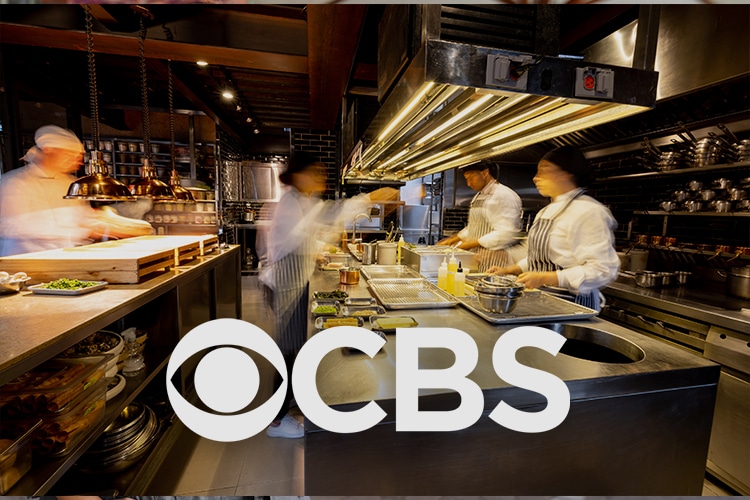Restaurant labor cost control has been exacerbated by the current labor shortage. How to manage labor cost is a challenge that all restaurant operators face daily as many restaurant businesses are forced to offer more competitive wages, benefits to hourly employees and other concessions to attract more employees from the shrinking applicant pool.
So, once you staff your business to the optimum level, the next challenge is how to reduce labor costs in a restaurant business. These may seem like opposing concepts, but it’s still possible to control labor costs despite higher wages. The key is analyzing your labor productivity. With data in hand, you can make ongoing improvements to lower your labor costs.
Restaurant Labor Cost Control
To optimize your labor costs, you must first familiarize yourself with some basic labor cost metrics.
Total Labor Cost
Your total restaurant labor cost includes all expenses related to labor, from salaries and hourly wages to payroll taxes, bonuses, overtime, worker’s compensation, and benefits such as health insurance. These are your fully burdened labor costs and must be used in your labor analysis.
Conversely, unburdened labor is the direct cost of scheduled shifts—what you pay in wages. While this is an important figure to track, it’s your fully burdened labor that you should use in determining your labor cost percentage.
Labor Cost Percentage
Calculating your restaurant labor cost and sales for a specific period indicates how your employee labor hours are matching with customer demand. Use the following restaurant labor cost formula to determine your labor cost percentage:
Total Labor Cost ÷Total Sales = Labor cost as a percentage of total sales
This includes your fully burdened labor restaurant cost (wages, payroll taxes, and benefits for that time period) divided by your revenue (the sales before taxes or other deductions) pulled from your point of sale (POS) system.
What is a good labor cost percentage? Industry average labor cost percentages vary depending on your industry segment and other details about your business model. On average, most restaurant businesses target a labor cost percentage between 25-35% of sales. However, that number can vary significantly, with QSR on the low end and fine dining restaurants on the higher end. (Do you know how much you are spending on labor as a percentage of your sales? Compare your labor cost percentage with the industry standard in this handy labor cost calculator.)
While it is helpful to know how your restaurant labor cost percentage compares with the industry, what is most important is that you are implementing improvements for your own percentage over time, while maintaining your standards of customer service. In other words, use the industry averages as a rough guideline, but use your own percentage as a benchmark for improvement. If your labor cost as a percentage of sales is currently at an impressive 27%, see if you can reduce that by 3% in the next year without diluting the customer experience.
11 reports that can contribute to restaurant labor cost control
Tracking and analyzing these eleven reports daily will help your restaurant group stay on top of any issues and make corrections.
1. Labor Actual vs. Scheduled
Like your AvT food cost report, your labor actual vs. scheduled analysis compares your scheduled labor cost, in theory, versus what you spent on labor during a specific period. This is your labor variance. If you have a large variance, you can drill down into details attached to the data points, like the job titles, exact date, and employee name to identify and correct the issue(s).
2. Sales Per Labor hour (SPLH)
Sales per labor hour tracks sales together with your labor hours. SPLH is a key indicator of labor productivity. It tracks which service times are the most productive, and which need improvement.
With information from your POS system, you can track time for staff alongside sales reports. A high SPLH may indicate that your shifts are understaffed, which can result in a poor customer experience, as well as negative employee morale. A low SPLH suggests employee scheduling issues like overstaffed shifts. Knowing the optimal goal for SPLH, broken down by day part, can help you maximize the results of your labor spend.
3. Customers Served Per Labor Hour
In addition to SPLH, tracking customers served per labor hour is also a useful number to track. This exact metric may shift by day part or day of the week but having a customers served goal can help you recognize scheduling issues of under or over staffing, allowing you to maximize how you are allocating your labor hours.
4. Labor Cost Per Staff Role
Consider splitting up your labor cost by staff roles to get an even more detailed insight into to controlling your labor costs. You can categorize by front-of-house staff versus back-of-house staff and management, or hourly or salaried pay, to see the detailed picture. This allows you to create custom strategies for optimizing your labor cost in each area of your restaurant.
5. Sales Per Server Hour
Your FOH team is essential to maximum sales levels and a great customer experience, so it’s important to track FOH performance over time. In addition to SPLH, you can get even greater detail by calculating your sales per server hour with the following formula:
Total server sales ÷ Number of service hours worked
Sales per server hour data can illustrate the efficiency of your servers. If there is room for improvement, consider store-level training, such as a refresher course on upselling. Training servers on how to suggest food and drink pairings can help maximize sales.
You may need to adjust goals for this metric if servers are having issues with table turnover rate. Additionally, if your service standard is high, as with fine dining, your sales per server hour may vary from a family restaurant with quick table turns.
6. Average Sales Per Server
This metric differs from sales per server hour, which looks at the entire team. Average sales per server tracks the success of individual team members.
Calculate the average sales per server by dividing total sales for an individual server by the total number of guests served by that same individual. By comparing these data points, you learn how effective a server is at upselling or maximizing sales.
This metric helps you leverage high-value restaurant employees in scheduling. Servers with the highest average sales should be scheduled during peak business hours to increase your revenue, while also improving your margins on restaurant labor cost.
However, it’s necessary to look at these numbers in context. You need to balance the scheduling requirements of your servers with optimal customer service.
7. Labor Productivity Analysis by Week
Labor productivity analysis by week is a report showing a combination of your SPLH and customers served per labor hour. These simple metrics can be a significant marker of labor productivity, allowing you to see what day parts or shifts are the most and least productive. Comparing productivity across locations indicates which stores require more training or other attention and can contribute to restaurant labor cost control.
8. Back of House vs. Front of House Labor Percentage
Tracking FOH and BOH labor percentage individually helps you optimize each part of your labor cost. Applying these numbers along with sales per labor hour allows you to create more strategic schedules.
9. Employee vs. Guest Count
Your employee vs. guest count chart displays the number of staff members that are working, compared to the customers served, during a specific period, filtered by location. When combined with your sales forecasting, this report can be critical for your store-level scheduling. By examining the labor peaks of previous weeks, your managers have more information about how many employees should be scheduled.
10. Sales and Labor Productivity
The sales and labor productivity report compares the sales for specified locations by service type, labor, productivity, and more. This report is beneficial in analyzing key statistics for each restaurant location while comparing all locations to maximize future scheduling.
11. Overtime Warning
An overtime warning report flags potential overtime, catching any employee that is near overtime, or notifying you about employees that have hit overtime.
The overtime warning tracks four main data points on a weekly basis: scheduled hours, actual hours, projected hours (calculated by current hours worked + the rest of the scheduled hours), and when the overtime begins.
This report can be extremely useful for restaurant groups that set overtime goals and want to make their store-level managers accountable for adhering to those goals.
Labor Cost Control: Conclusion
Combining labor cost optimization with an exceptional customer experience is essential for your restaurant business to thrive. As minimum wages increase and hiring challenges continue to impact the restaurant industry, it is more important than ever to keep a close eye on your labor costs.
If you’d like to get the tools you need to track and optimize labor costs, consider an all-in-one restaurant management system. Restaurant365 incorporates labor reporting, restaurant accounting, restaurant operations, inventory management, payroll + HR, and scheduling into a cloud-based platform that’s fully integrated with your POS system, as well as to your food and beverage vendors, and bank.
Request a demo of Restaurant365 today.



